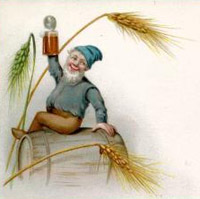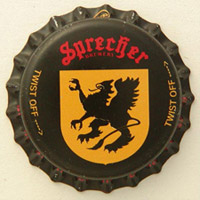 A few years ago a judge rather boldly wrote “Crisp Maris Otter?” in comments about an old ale I entered in a homebrew competition. I did, in fact, use Maris Otter, though it happened to be malted by Thomas Fawcett rather than Crisp.
A few years ago a judge rather boldly wrote “Crisp Maris Otter?” in comments about an old ale I entered in a homebrew competition. I did, in fact, use Maris Otter, though it happened to be malted by Thomas Fawcett rather than Crisp.
I was nonetheless impressed.
I thought of this because British UK maltster Robin Appel has begun promoting the idea that not all malts taste the same. He’s taken his case to the British Guild of Beer Writers and barley farmers, commissioning Brewing Research International in Surrey to produced test batches. They seem to be proving his point. From the Guild report:
Robin Appel was determined to put this unexplored question to the test. If winemakers could demonstrate the differences between Chardonnay, Pinot Grigio and Sauvignon Blanc; and hop growers could define the peculiarities of Fuggles, Goldings and Boadicea – then wasn’t it about time that our maltsters sought to add value and individuality to Britain’s home-grown barley varieties.
In recounting the tasting guild chairman Tim Hampson wrote that Maris Otter is being pushed aside in favor of barleys that are more efficient.
The tasting was enough to impress Hampson. “Robin Appel’s malt-teasers won me over and made me think that the barley from which a beer is made is perhaps something we should pay much more attention to,” he wrote.
Sales director Jonathan Arnold said the company will continue to push the issue: “After the 2007 harvest, we intend to take this trial further by looking at the individual flavors of Maris Otter barley grown in different terroirs and soils – from Norfolk, Yorkshire, Shropshire, the West Country and the South – to see what flavor characteristics will be demonstrated by each.”
OK, the terroir part might sound a little scary – personally, I think breweries already have enough other idiosyncratic qualities that are comparable to what winemakers call terroir – but I’d still love to taste the results.
And this idea isn’t totally new. Brewers on the other side of the English Channel have plenty to say about the importance of barley selection. More about that tomorrow.
 1. Sprecher Amber (I believe was their start up brew) – the first Micro I remember hearing about in this area right around the time it opened in ’85. I can remember seeking out the brewery for a tour and purchases, parking in the lot of a closed factory close to where I*knew* the brewery was according to the map (pre-Internet and MapQuest), seeing a train blocking my route, crawling tentatively between 2 coupled cars and announcing, “There it is!” What a great tour and great beer – supplied by Randy Sprecher himself.
1. Sprecher Amber (I believe was their start up brew) – the first Micro I remember hearing about in this area right around the time it opened in ’85. I can remember seeking out the brewery for a tour and purchases, parking in the lot of a closed factory close to where I*knew* the brewery was according to the map (pre-Internet and MapQuest), seeing a train blocking my route, crawling tentatively between 2 coupled cars and announcing, “There it is!” What a great tour and great beer – supplied by Randy Sprecher himself. Missed this story about the
Missed this story about the